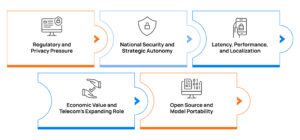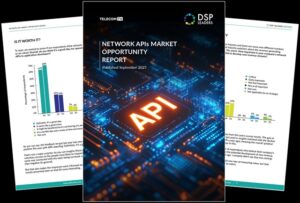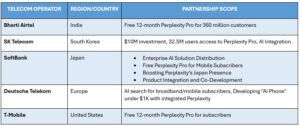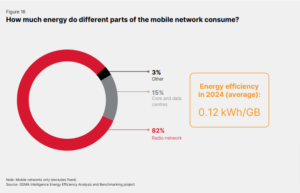Generative AI first gained public attention with solutions like ChatGPT, allowing users to generate content by conversing with AI systems powered by large language models (LLMs). Initially, businesses adopted Generative AI as chatbot solutions to enhance customer experience and streamline internal operations. These early use cases, leveraging conventional AI technology, achieved notable success. However, telecom operators are now exploring more advanced applications of Generative AI, taking it beyond mere chat tools to transform network operations and drive monetization.
The Strategic Focus of Telecom Operators on Generative AI
Over the past two years, telecom operators have invested significantly in Generative AI, recognizing its potential to reduce operational costs, optimize network resources, and prevent breakdowns. These efforts are part of a broader strategy to transform networks and tap into new revenue streams, requiring substantial investment. Generative AI is as a technological boom that can help achieve these goals, with progress already evident.
Telecom operators’ focus extends beyond using Generative AI for customer experience and internal process optimization. They are now exploring advanced use cases that promise significant cost reductions and improved network performance. In this article, we will explore how leading telecom players and research bodies, such as the TM Forum, leverage Generative AI for network optimization, troubleshooting, and automated issue resolution.
Use Cases of Generative AI in Telecom
Mavenir: Automating Network Management
Mavenir is transforming network management with its AI-powered Operations Co-Pilot, which was developed in collaboration with NVIDIA and Amazon Web Services. This tool leverages Generative AI to analyze network data and automate tasks such as core dump analysis, log anomaly detection, and root cause analysis. These capabilities significantly streamline network management processes, reducing the workload on communication service provider (CSP) staff and enhancing service levels.
A notable application of this technology is in Mavenir’s Operations Co-Pilot for RAN Service Assurance (RSA), which proactively identifies and resolves network issues before they lead to outages. By leveraging large language models trained on extensive network data, this tool marks a significant advancement in telecom automation, promising more efficient and reliable operations.
Check out the detailed video here for an in-depth look at this transformative technology.
British Telecom: Enhancing Software Development with AI
BT Group’s Digital Unit is significantly boosting software development productivity by incorporating Amazon’s CodeWhisperer. This AI-powered tool is a game-changer for BT’s software engineers. It provides real-time code suggestions across 15 programming languages. It accelerates coding, helps developers avoid errors, and automates repetitive tasks, freeing up time for more creative problem-solving.
Since its rollout, CodeWhisperer has generated over 100,000 lines of code and now empowers 1,200 BT engineers. The initial feedback has been overwhelmingly positive, with a 37% acceptance rate for AI-suggested code and 12% of monotonous tasks being automated. This impressive start is just the beginning, as BT plans to introduce more AI tools to modernize its development process.
Additionally, BT is leveraging generative AI (GenAI) to breathe new life into its legacy code. By analyzing and refactoring outdated COBOL and Java code into microservices aligned with the Open Digital Architecture (ODA), BT is ensuring its systems are more agile and future-proof.
T-Mobile: Streamlining Network Operations with GURU
AWS recently highlighted a case study showcasing their generative AI’s impact on T-Mobile’s 5G radio networks, significantly boosting operational productivity, network efficiency, and service continuity.
The Radio Access Network (RAN) design and operations face many challenges, with engineers creating Methods of Operations (MoPs) and operations teams executing them, often at night without immediate assistance. When unexpected outcomes occur, extensive research into 3GPP standards and vendor documentation is required, and mistakes can lead to costly outages. To address these issues, AWS developed GURU, a generative AI-based chatbot.
GURU delivers precise real-time recommendations, resulting in a 10% decrease in network outages and a 30% boost in operational efficiency. This tool streamlines the MOP creation process, reduces research time, and enhances network operations with real-time Q&A capabilities and efficient troubleshooting, enabling engineers to resolve issues quickly.
The anticipated benefits include a 30% reduction in operational time for MOP creation and a 10% decrease in system outages through proactive troubleshooting. GURU addresses the challenges RAN design engineers and operations teams face, significantly improving overall network performance and reliability.
AWS’s GURU chatbot exemplifies how advanced AI can revolutionize telecom operations, leading to more efficient and resilient 5G networks.
The above telcos demonstrate the use cases below as per our analysis..
- Analyze network data
- Automate tasks
- Core Dump Analysis
- Log Anomaly Detection
- Root cause analysis
- Analys and Refactor code
- Method of Operations (MoPs) creation
- Real-time recommendations for RAN design and operations
- Resolve Network Performance issues
Now, let’s talk about the use cases that TM Forum is exploring.
TM Forum Catalyst Programs The TM Forum Catalyst programs have been exploring using Generative AI for network optimization and troubleshooting. Operators in China and the APAC region have implemented use cases leveraging Generative AI for decision-making and intelligence analysis in wireless network optimization and transport network troubleshooting. These initiatives highlight the potential of Generative AI to revolutionize network operations and drive significant improvements in performance and reliability.
- Core Network Complaint Analysis: This is an intelligent analysis that automatically examines signaling to improve the accuracy and efficiency of complaint handling.
- Transport Network Troubleshooting: Intelligent decision-making that enhances automation and interaction for troubleshooting network issues.
- Hybrid Broadcast Broadband (HBB) Installation and Maintenance: Intent understanding that assists engineers with installation, maintenance, and troubleshooting through natural language interaction and knowledge databases.
- Wireless Network Optimization: Enhancement of data analysis capabilities, providing deeper insights into network performance and customer behavior, leading to more effective optimization strategies.
- Intelligent Charging Management: Enhancement of intent understanding, implementing intelligent configuration and recommendations for the charging system, thus shortening the service monetization period.
- Data Inventory Quality Improvement: Improvement in the accuracy and completeness of network asset data.
- Root Cause Detection & Analysis: Identifies, classifies, and analyzes the root causes of network issues using a pre-trained AI model, providing quick and accurate diagnostics and reducing troubleshooting time.
- Engineering Activities for Remediation: Development of automated remediation strategies, enhancing the network’s self-healing capabilities.
- Operational Efficiency: Implementing a ‘Dark NOC’ framework automates routine operational tasks, reducing the need for manual intervention and saving significant workforce hours.
- Service Management Automation: Automated tracking and prioritization of network issues based on service impact, autonomously feeding corrective actions into the network.
- Predictive and Proactive Management: Uses predictive analytics to foresee potential network issues and address them before they affect service quality, preventing customer churn.
- Network Auto-Discovery and Reconciliation: This feature automates the discovery and reconciliation of network assets, improving data inventory quality and enabling seamless management of network functions.
- Large Communication Models and Knowledge Graphs: Constructs extensive communication models and a communication knowledge graph to perceive the quality and condition of the network and its services, facilitating a comprehensive view of network operations and service quality.
- Automated Classification of Network Issues: Automatically classify network issues using a unified communication model.
- Intent-Driven Automation: Converts identified solutions into network commands, simplifying the execution of complex operations and implementing intelligent closed-loop automation for continuous monitoring, analysis, and resolution of network issues.
- Self-Cognitive Network Capabilities: Enables the network to understand and respond to its performance and operational conditions, continuously improving and adapting based on new data and past experiences.
- Automated Service Provisioning: This technique uses intent-driven techniques to translate service requests into network commands, automating the end-to-end process of service provisioning from request to activation.
- Real-Time Network and Service Resource Inventory Management: Automatically discovers and updates the inventory of network resources in real-time, mediating between various systems, processes, and data to accurately reflect the current state of the network topology.
- Intent-Based Closed Loop Service Fulfillment: Implements a closed-loop automation system that continuously monitors, analyzes, and resolves network issues based on intent-driven commands, using a feedback loop to improve AI model efficacy over time.
- Network Insights and Discovery: Aggregates and analyzes data from various network sources to offer detailed insights, facilitating timely information discovery across the network and its associated elements.
- Automated Business Process Management: The system assigns specific tasks to dedicated computing and networking professional agents and orchestrates procedural business process management strategies to completion, ensuring seamless alignment with customer intent.
- Intent-Driven CFN Services: Advanced LLMs comprehend and inquire about customer business scenarios, then autonomously craft bespoke solutions that meet specific requirements. Clients can refine these proposals using an intuitive chatbot interface, replacing traditional product catalogs.
- AI-Native Computing Force Network (CFN) Operation System: The CFN operation system integrates diverse resources from cloud providers, telecom clouds, and third-party services. It uses GenAI for multi-agent collaboration and automated code generation to streamline resource allocation and service delivery.
| # | TM Forum Catalysts | Use Cases | Benefits |
| 1 | GenAI Powered toolkit for network & service management |
|
|
| 2 | GenAI and knowledge driven 5G operations |
|
|
| 3 | DarkNOC: GenAI propels insights driven NetOps |
|
|
| 4 | GenAI for Autonomous Networks |
|
|
| 5 | GenAI empowers computing force network |
|
|
Conclusion
Telecom operators are at the forefront of leveraging Generative AI to transform network operations. By automating tasks, analyzing network data, and providing real-time recommendations, Generative AI is helping telcos reduce operational costs, enhance network performance, and improve service delivery. However, this is just the beginning.
In the following year, we can expect to see an explosion of innovative use cases as Generative AI becomes an integral part of telecom operations. The pace of adoption is accelerating, and those who fail to harness the power of this technology risk being left behind. The telecom industry stands on the brink of a revolution driven by the relentless advancements in AI. Buckle up because the next wave of Generative AI applications will not just optimize networks but redefine the very fabric of how telecom operators function and compete.






Be First to Comment